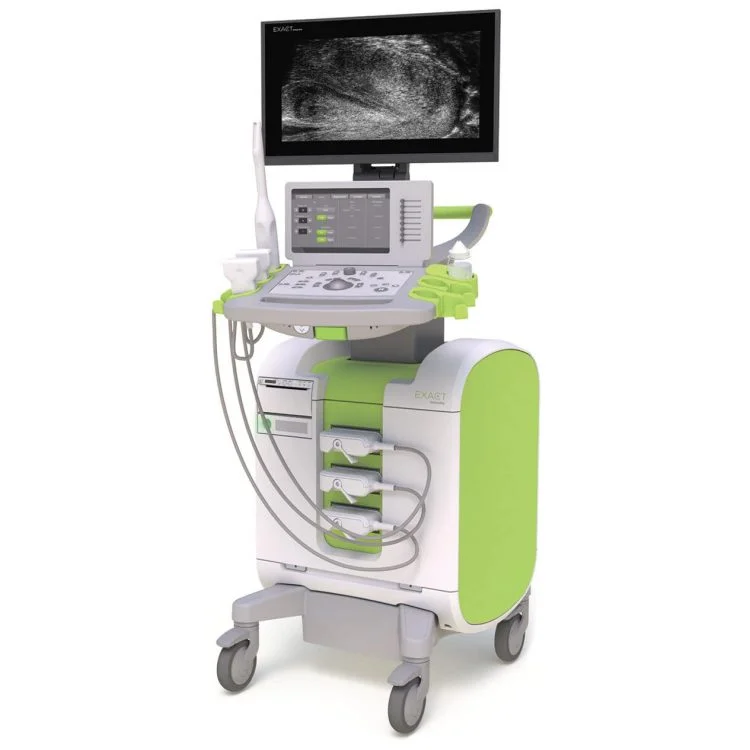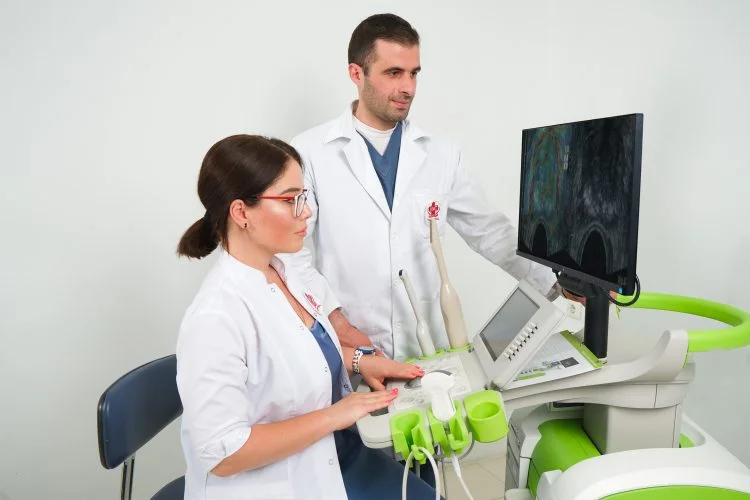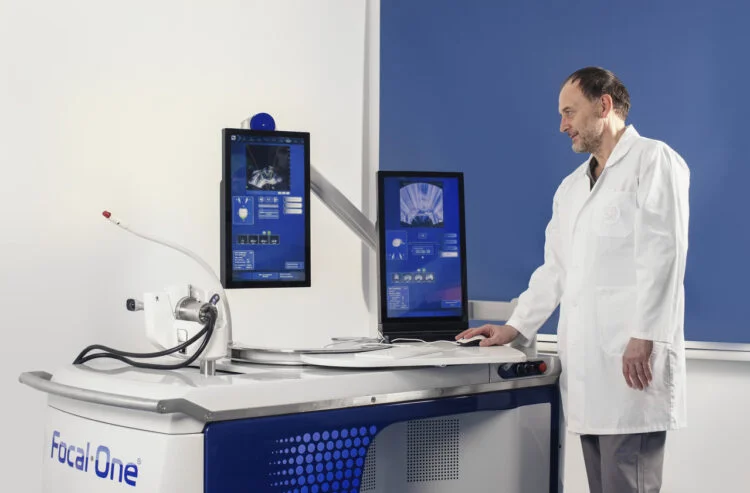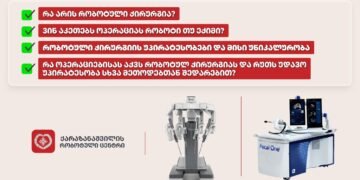Prostate cancer is the most common cancer among men and, unfortunately, ranks either first or second in cancer-related mortality.
It was once considered a disease of older men, but recent statistics show that the age of those diagnosed with prostate cancer is decreasing significantly. This trend makes prostate cancer an even more urgent and important global medical challenge.
Professor Guram Kharazishvili’s Urology Hub, through its Prostate Diagnosis and Treatment Center, shares 4 key updates in the diagnosis and treatment of prostate cancer that every man (and not only men) should be aware of:
1. PSA Threshold Levels Have Changed – When Should You Suspect Prostate Cancer?
 According to the latest recommendations from the European Association of Urology, the threshold for PSA (Prostate-Specific Antigen) levels has been revised. The new guidelines state that PSA is considered normal if it does not exceed 2 ng/mL (previously, the normal range was 0–4 ng/mL). Therefore, a PSA under 2 ng/mL is now considered within the normal range, and typically not suspicious for prostate cancer.
According to the latest recommendations from the European Association of Urology, the threshold for PSA (Prostate-Specific Antigen) levels has been revised. The new guidelines state that PSA is considered normal if it does not exceed 2 ng/mL (previously, the normal range was 0–4 ng/mL). Therefore, a PSA under 2 ng/mL is now considered within the normal range, and typically not suspicious for prostate cancer.
However, it’s important to note that:
-
If PSA exceeds 2 ng/mL, this does not automatically indicate cancer or mean that a biopsy is necessary.
A targeted or fusion biopsy is performed only in the following cases:
-
PSA is greater than 2 ng/mL and suspicious areas are identified in the prostate using micro-ultrasound imaging.
-
PSA level is higher than 4 ng/mL.
2. Micro-Ultrasound – A Newest Method for Detecting Suspicious Prostate Areas
 As mentioned earlier, identifying suspicious regions in the prostate is one of the most critical steps in assessing cancer risk, alongside measuring PSA levels.
As mentioned earlier, identifying suspicious regions in the prostate is one of the most critical steps in assessing cancer risk, alongside measuring PSA levels.
The second important update we want to highlight is the advanced imaging device that allows for the detection of suspicious prostate tissue: the ExactVu micro-ultrasound system.
This is a state-of-the-art platform designed specifically to examine prostate tissue at the cellular level. Compared to standard ultrasound, it provides 300% improved visualization.
Micro-ultrasound helps:
-
Determine whether a biopsy is necessary
-
Identify the most relevant areas for targeted biopsy if needed
Taking all this into account, it is fair to say that micro-ultrasound is one of the most advanced and effective tools in prostate evaluation, helping patients avoid unnecessary biopsies while improving diagnostic accuracy.
3. Targeted “Fusion” Biopsy

A biopsy is performed to detect oncological (cancerous) conditions in a timely manner. It involves removing a sample of suspicious tissue and analyzing it. Biopsy results help confirm or rule out harmful processes in the body.
Traditionally, to detect cancer, a random sampling method has been used, which involves taking an average of 12–14 tissue samples from the prostate with a needle. However, this approach carries a high risk of missing cancerous tissue, meaning a patient may need multiple biopsies over time, potentially delaying diagnosis and complicating treatment.
The third innovation we want to share is a far more accurate and modern technique — targeted “fusion” biopsy using simultaneous MRI and micro-ultrasound guidance.
As the name suggests, unlike traditional methods, fusion biopsy is not based on random sampling. Instead, it enables highly precise targeting of suspicious tissue. Specifically:
-
Fusion biopsy integrates micro-ultrasound and MRI imaging using the ExactVu micro-ultrasound platform.
-
This technology is specifically designed for prostate examination and is based on superior visual resolution.
With this method, clinicians can achieve:
-
Precise differentiation of suspicious tissue
-
High-definition visualization of concerning areas
-
Accurate targeting of biopsy needles to suspicious zones
-
Real-time performance of targeted biopsies
Targeted fusion biopsy enables specialists to detect hidden cancers in nearly 100% of cases, even those that traditional biopsy methods might miss.
4. And Finally, the Fourth Major Innovation – One-Day, Non-Surgical Robotic Treatment of Prostate Cancer!

A revolutionary technology developed by French company EDAP TMS is the Focal ONE Robotic HIFU Therapy (High-Intensity Focused Ultrasound).
This is a state-of-the-art, non-surgical, non-invasive, radiation-free robotic therapy that precisely destroys cancerous prostate tissue while preserving healthy tissue. Since it targets only the affected areas of the prostate, the rest of the organ remains intact. This significantly reduces the risk of disease progression and leads to fewer side effects, ultimately improving quality of life.
Compared to radical treatments like prostatectomy or radiation therapy, Focal ONE offers major advantages, especially in preserving sexual and urinary functions.
Key Benefits of Focal ONE HIFU Therapy:
-
No incisions – completely non-invasive
-
No needles or punctures
-
No surgical risks
-
No ionizing or radioactive radiation
-
Preserves the prostate, sexual function, and urinary continence
-
No hospitalization or multiple treatment sessions – patients are discharged within a few hours
-
Precisely targets the diseased tissue
-
Healthy tissue and surrounding organs remain unharmed
Focal ONE HIFU is FDA-approved – an important point, as the U.S. Food and Drug Administration ensures the safety and effectiveness of medications, medical devices, and treatments used in public healthcare.
This innovation represents a groundbreaking step in prostate cancer treatment – offering effectiveness, safety, and preservation of the patient’s quality of life.







